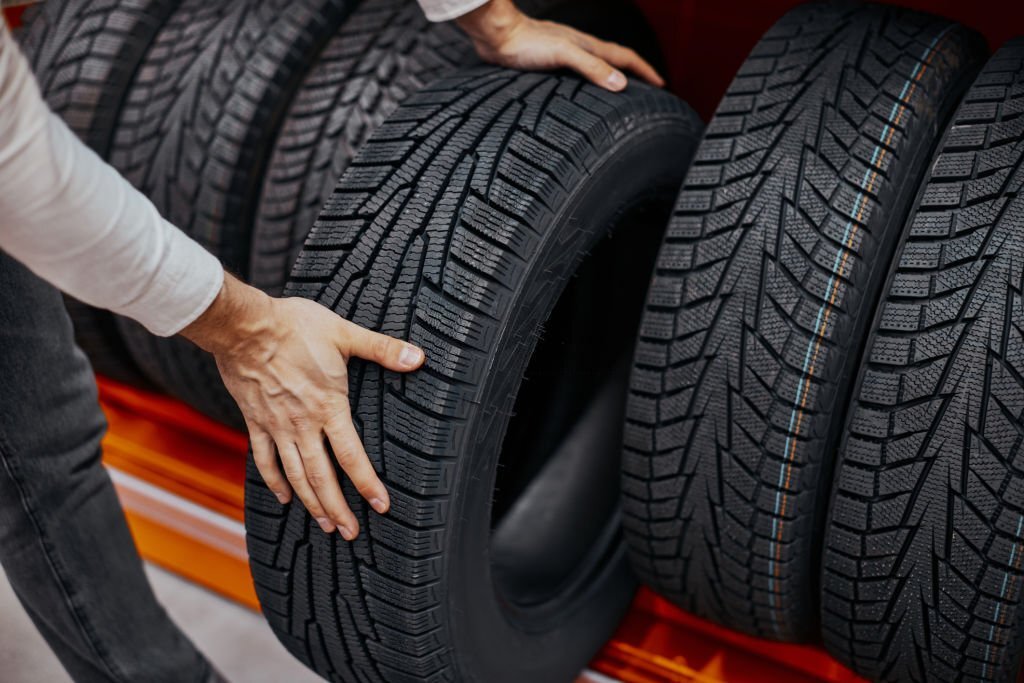225 and 235 are two different tire sizes. The numbers refer to the tire’s width in millimeters. For example, a 225 tire is 225 millimeters wide and a 235 tire is 235 millimeters wide.
The difference between a 225 tire and a 235 tire is 10 millimeters or 0.39 inches. This may not seem like a significant difference, but it can have an impact on the tire’s performance, including handling, acceleration, and fuel efficiency.
A wider tire, such as a 235, can provide better traction and stability, especially when cornering or driving on wet or slippery roads. It can also improve the vehicle’s appearance with a wider, more aggressive stance. However, wider tires can also create more drag and decrease fuel efficiency.
A narrower tire, such as a 225, can improve fuel efficiency and provide a smoother ride, but may not have as much traction or stability as a wider tire.
It’s important to choose the correct tire size for your vehicle, as recommended by the manufacturer. Using a tire size that is not recommended for your vehicle can affect handling, stability, and safety on the road.
Why does tire size matter?
Tire size matters for several reasons, including:
- Vehicle performance: The tire size can affect the vehicle’s performance, including acceleration, handling, and braking. Tires that are too large or too small can affect the vehicle’s speedometer reading, which can impact the accuracy of the vehicle’s performance measurements.
- Safety: Tires that are too large or too small for a vehicle can affect the vehicle’s handling and stability, increasing the risk of accidents. Using the wrong size of tire can also result in blowouts or other tire failures, which can be dangerous.
- Comfort: The tire size can also affect the comfort of the ride, with larger tires providing a smoother ride and smaller tires providing a firmer ride.
- Fuel efficiency: The size and type of tire can also affect fuel efficiency, with larger tires typically resulting in lower fuel efficiency due to increased rolling resistance.
- Appearance: The tire size can also affect the appearance of the vehicle, with larger tires providing a more aggressive and sporty look.
It’s important to choose the correct tire size for your vehicle, as recommended by the manufacturer. Using the wrong size of tire can affect vehicle performance, safety, and comfort, and can even be illegal in some areas. A professional tire technician can provide advice on the correct tire size for your vehicle.
What is the difference between 225 and 235 tires?
The difference between 225 and 235 tires is the width of the tire in millimeters. The first number (225 or 235) refers to the tire’s section width, which is the distance between the inner sidewalls of the tire when mounted on a rim and inflated to the manufacturer’s recommended pressure.
So, a 225 tire is 225 millimeters wide, while a 235 tire is 235 millimeters wide. This means that the 235 tire is wider than the 225 tire by 10 millimeters or 0.39 inches.
The difference in width between a 225 and 235 tire can affect the tire’s performance, including handling, traction, and fuel efficiency. A wider tire, such as a 235, can provide better traction and stability, especially when cornering or driving on wet or slippery roads. It can also improve the vehicle’s appearance with a wider, more aggressive stance. However, wider tires can also create more drag and decrease fuel efficiency.
A narrower tire, such as a 225, can improve fuel efficiency and provide a smoother ride, but may not have as much traction or stability as a wider tire.
It’s important to choose the correct tire size for your vehicle, as recommended by the manufacturer. Using the wrong size of tire can affect handling, stability, and safety on the road.
Which one gives you more mileage? 225 or 235?
The width of a tire, whether it’s 225 or 235, is just one factor that can affect tire mileage. Other factors that can impact tire mileage include the tire’s tread design, construction, and materials, as well as driving habits and road conditions.
In general, there is no clear answer as to whether a 225 or 235 tire will give you more mileage. It really depends on the specific tire brand and model, as well as how it is used and maintained.
However, narrower tires, such as a 225, may have a slight advantage when it comes to fuel efficiency, which could lead to slightly longer tire life due to less fuel consumption. But again, this may vary depending on the specific tire and driving conditions.
The most important thing is to choose the correct tire size for your vehicle, as recommended by the manufacturer, and to properly maintain your tires to ensure maximum mileage and safety. This includes regular inspections, proper inflation, rotation, and alignment.
Examples of a 225 tire
Here are some examples of popular 225 tire sizes:
- Goodyear Assurance All-Season: 225/60R16
- Michelin Premier A/S: 225/55R17
- Bridgestone Ecopia EP422 Plus: 225/65R17
- Continental TrueContact Tour: 225/55R18
- Pirelli P4 Four Seasons Plus: 225/50R17
- Falken Ziex ZE950 A/S: 225/45R18
- Hankook Kinergy PT: 225/50R18
- Kumho Solus TA11: 225/65R16
- Firestone Destination LE2: 225/70R16
- Toyo Open Country A/T III: 225/65R17
Examples of a 235 tire
Here are some examples of popular 235 tire sizes:
- Michelin Defender T+H: 235/65R17
- Bridgestone Dueler H/L Alenza Plus: 235/60R18
- Goodyear Assurance WeatherReady: 235/55R18
- Continental PureContact LS: 235/50R18
- Pirelli Scorpion Verde All Season Plus: 235/55R19
- Firestone Destination LE3: 235/75R15
- Hankook Dynapro AT2 RF11: 235/75R15
- Kumho Road Venture AT51: 235/75R15
- BFGoodrich All-Terrain T/A KO2: 235/75R15
- Nitto Terra Grappler G2: 235/65R17
In conclusion, the difference between a 225 and 235 tire is primarily in their width, with the 235 tire being slightly wider by 10 millimeters or 0.39 inches. The difference in width can have an impact on tire performance, including handling, traction, and fuel efficiency, but the exact impact will depend on various other factors such as the tire’s tread design, construction, and materials, as well as driving habits and road conditions.
When choosing between a 225 and 235 tire, it’s important to consider the manufacturer’s recommendations for your specific vehicle and to select a tire that meets those requirements. This will ensure optimal performance, safety, and longevity for your tires.
Overall, whether you choose a 225 or 235 tire will depend on your specific driving needs and preferences. A wider tire, such as a 235, may provide better traction and stability, while a narrower tire, such as a 225, may improve fuel efficiency and provide a smoother ride. However, other factors such as the tire brand and model, as well as proper maintenance, will also play a significant role in determining tire performance and longevity.
In the end, the most important thing is to choose a tire that is safe, reliable, and fits your specific driving needs and preferences.


